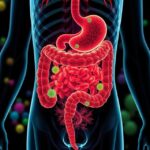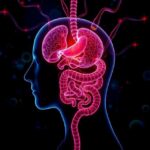Air pollution is one of the most pressing environmental and public health concerns of our time. Despite growing awareness, many people continue to underestimate its long-term effects on human health. The invisible yet deadly contaminants in the air we breathe can lead to severe respiratory diseases, cardiovascular problems, neurological disorders, and even premature death. This article explores the hidden dangers of air pollution, its sources, and how we can mitigate its effects for a healthier future.
What is Air Pollution?
Air pollution refers to the presence of harmful substances in the air, including gases, particles, and biological molecules. These pollutants originate from both natural sources, such as wildfires and volcanic eruptions, and human activities, including vehicle emissions, industrial processes, and agricultural practices.
The World Health Organization (WHO) identifies air pollution as a major environmental risk to health, with millions of premature deaths attributed to it annually. The severity of its impact depends on the type, concentration, and duration of exposure to pollutants.
Types of Air Pollutants
1. Particulate Matter (PM2.5 and PM10)
Fine particulate matter (PM2.5) and coarse particulate matter (PM10) are tiny particles suspended in the air. PM2.5 is particularly dangerous because it can penetrate deep into the lungs and enter the bloodstream, leading to serious health issues.
2. Carbon Monoxide (CO)
A colorless, odorless gas produced by burning fossil fuels, carbon monoxide reduces oxygen delivery to organs and tissues, causing dizziness, headaches, and, in severe cases, death.
3. Nitrogen Oxides (NOx)
Generated by vehicle emissions and industrial activities, nitrogen oxides contribute to smog formation and respiratory problems. Long-term exposure can damage lung function and increase the risk of infections.
4. Sulfur Dioxide (SO2)
Primarily released from burning coal and oil, sulfur dioxide can cause respiratory irritation, asthma attacks, and chronic lung diseases.
5. Volatile Organic Compounds (VOCs)
These toxic chemicals, found in industrial emissions, vehicle exhaust, and household products, can cause short-term symptoms like dizziness and nausea, as well as long-term effects such as liver and kidney damage.
6. Ground-Level Ozone (O3)
A major component of smog, ozone is created by chemical reactions between NOx and VOCs in sunlight. It can lead to lung inflammation, asthma exacerbation, and decreased lung function.
How Air Pollution Affects Human Health
1. Respiratory System Disorders
Air pollution is a leading cause of chronic respiratory diseases such as:
Asthma: Exposure to pollutants like PM2.5 and ozone can trigger asthma attacks, making it difficult to breathe.
Chronic Obstructive Pulmonary Disease (COPD): Long-term exposure to pollutants contributes to COPD, leading to persistent cough, difficulty breathing, and reduced lung function.
Lung Cancer: Studies link prolonged exposure to air pollution with an increased risk of lung cancer, especially in urban areas with high industrial emissions.
2. Cardiovascular Diseases
Pollutants such as PM2.5, NOx, and CO contribute to:
High Blood Pressure: Air pollution causes inflammation in the blood vessels, increasing blood pressure and the risk of heart attacks and strokes.
Heart Disease: Particulate matter can enter the bloodstream, leading to plaque buildup in arteries, heart attacks, and heart failure.
3. Neurological Effects
Recent research suggests that air pollution affects brain health, contributing to:
Cognitive Decline: Airborne toxins have been linked to neurodegenerative diseases like Alzheimer’s and Parkinson’s.
Mental Health Issues: Pollutants can cause inflammation in the brain, increasing the risk of anxiety, depression, and other psychiatric disorders.
4. Effects on Children and Pregnant Women
Air pollution has severe consequences for vulnerable populations, including:
Birth Defects and Premature Births: Pregnant women exposed to high pollution levels are at increased risk of giving birth prematurely or having babies with low birth weight.
Cognitive and Developmental Delays: Children exposed to polluted air are more likely to suffer from learning disabilities, reduced IQ, and attention deficit disorders.
5. Increased Mortality Rate
According to WHO, air pollution contributes to approximately 7 million premature deaths annually. The risks are especially high in developing countries, where pollution control measures are inadequate.
Major Sources of Air Pollution
1. Vehicular Emissions
The transportation sector is a leading contributor to air pollution, emitting nitrogen oxides, carbon monoxide, and particulate matter.
2. Industrial Activities
Factories and power plants release massive amounts of sulfur dioxide, nitrogen oxides, and other pollutants into the atmosphere.
3. Agricultural Practices
Pesticides, fertilizers, and livestock emissions contribute to ammonia pollution and greenhouse gas emissions.
4. Household Pollution
Burning wood, coal, or biomass for cooking and heating releases toxic pollutants that pose severe health risks, especially in low-income households.
5. Deforestation and Wildfires
Cutting down trees reduces air quality by increasing carbon dioxide levels, while wildfires release large amounts of smoke and pollutants.
Air Pollution and Climate Change
Air pollution and climate change are closely linked. Pollutants like carbon dioxide (CO2) and methane contribute to global warming, while aerosols and black carbon impact weather patterns. Rising temperatures can also worsen air pollution by increasing ground-level ozone levels.
Mitigating air pollution is essential not only for human health but also for addressing climate change and preserving ecosystems.
Solutions to Reduce Air Pollution
1. Government Policies and Regulations
Implementing stricter emission standards for industries and vehicles.
Encouraging public transportation and non-motorized transport options.
Investing in renewable energy like solar and wind power to reduce reliance on fossil fuels.
2. Technological Innovations
Electric Vehicles (EVs): Reducing dependence on gasoline and diesel-powered vehicles.
Air Purification Systems: Installing air filters in homes and workplaces to improve indoor air quality.
Carbon Capture Technology: Capturing emissions from industrial processes to prevent them from entering the atmosphere.
3. Individual Actions to Reduce Exposure
Using masks and air purifiers in polluted areas.
Avoiding outdoor activities during high pollution levels.
Supporting eco-friendly practices, such as planting trees and reducing waste.
4. Promoting Green Spaces
Urban forests and green belts can help filter pollutants and improve air quality.
Rooftop gardens and vertical forests can reduce heat and absorb carbon dioxide.
Final Thoughts
Air pollution is a silent killer that affects millions of people worldwide. While its dangers often go unnoticed, its impact on human health, the environment, and the economy is profound. Governments, industries, and individuals must work together to reduce air pollution through sustainable practices, advanced technologies, and strict regulations.
By taking proactive steps today, we can protect future generations from the devastating consequences of air pollution and ensure a cleaner, healthier planet for all.
Related posts:
 The Role of Gut Microbiome in Overall Health: The Hidden Ecosystem Within You
The Role of Gut Microbiome in Overall Health: The Hidden Ecosystem Within You
 The Healing Power of Nature: How Green Spaces Improve Mental Health
The Healing Power of Nature: How Green Spaces Improve Mental Health
 The Secret to Being Healthy Is Hidden in the Kitchen
The Secret to Being Healthy Is Hidden in the Kitchen
 Impact of Blue Light & Screen Time on Eye Health and Sleep | Digital Wellness Tips
Impact of Blue Light & Screen Time on Eye Health and Sleep | Digital Wellness Tips
 Food is Medicine: Unlocking the Healing Power of Nutrition for Lifelong Health
Food is Medicine: Unlocking the Healing Power of Nutrition for Lifelong Health
 How Stress Affects Digestion – Gut Health & Mental Wellness Connection
How Stress Affects Digestion – Gut Health & Mental Wellness Connection
